Practical Introduction to Literary Study, A
$139.99
- Description
- Additional information
Description
For undergraduate courses in Introduction to Literature, Writing about Literature, and Composition and Literature.
Designed for students new to literary study, this brief, practical text addresses how and why people read literature, and provides students with different ways of thinking about the literature they are reading.
I. LITERATURE AND CRITICAL THINKING.
1. Literature and the Literary Canon.
2. Challenges to the Canon.
2.1 Challenges to the Canon
2.2 The Boundaries of Poetry
2.3 Television and Film as Drama
3. Why Read Literature?
3.1 The Habit of Critical Thinking
3.2 Critical Thinking and Popular Tastes
II. READING CRITICALLY.
4. The Act of Reading.
4.1 Text and Subtext
4.2 Searching for Clues
4.3 Authorial Intention
4.4 Tips for the Physical Act of Reading
5. Reading Fiction Actively.
6. Engaging with Poetry.
6.1 Example: Robert Frost “Desert Places”; “The Road Not Taken”
6.2 Example: Shakespeare’s Sonnets “Sonnet 18”, “Sonnet 130”
7. Experiencing Drama.
8. Analytical Reading.
III. UNDERSTANDING LITERARY LANGUAGE.
9. The Elements of Narrative.
9.1 Plot
9.2 Setting
9.3 Character
9.4 Dialogue; Robert Browning, “My Last Duchess”
9.5 Theme
9.6 Point of View
9.7 Tone
10. Figurative Language.
10.1 Tropes
10.2 Rhetorical Devices
11. Prose Genres.
11.1 Fiction Genres by Length
11.2 Types of Fiction
11.3 Nonfiction
12. Poetry, Forms and Genres.
12.1 Types of Poems
12.2 Prosody and Poetic Diction
13. Drama.
13.1 Dramatic Conventions
13.2 Subgenres of Drama
IV. EXPLICATION AND ANALYSIS.
14. From Reading to Writing.
14.1 “Rules” for Good Writing
14.2 Writing as a Process
14.3 Topics and Assignments
14.4 Asking the Right Question
14.5 From Question to Thesis
15. Formulating an Argument.
15.1 Developing Proof and Evidence
15.2 Organization and Structure
15.3 Introductions and Conclusions
15.4 Revising Your Paper
16. Citing Primary Texts and Formatting Your Paper.
16.1 Citing Primary Texts
16.2 Formatting Your Paper
17. Practical Advice.
18. Sample Student Essay 1.
19. Sample Student Essay 2.
V. SECONDARY SOURCES, RESEARCH, AND CRITICAL THEORY.
20. Research Methods in the Digital Age.
20.1 Database Searches
20.2 Using the Library
20.3 Evaluating Internet Sources: Can You Trust This Web Site?
20.4 Quick Tips for Literary Research
21. Reading Literary Criticism.
Stanley Renner, “Moving to the Girl’s Side of ‘Hills Like White Elephants'”
22. Practical Advice for Reading and Evaluating Literary Criticism.
23. Plagiarism and Academic Honesty.
24. MLA Documentation Style.
24.1 Understanding MLA Documentation
24.2 Works Cited Entries in MLA Style
24.3 Sample Works Cited Page
24.4 SampleStudent Research Paper
25. A Brief Introduction to Critical Theory.
25.1 New Criticism
25.2 Psychoanalytic Criticism
25.3 Deconstruction adn Poststructuralism
25.4 Feminist and Gender Criticism
25.5 Cultural Studies adn New Historicism
25.6 Theory-Based Readings: Approaches to “Araby”
26. Reading a Theory-Based Article.
Ellen Golub, “Untying Goblin Apron Strings: A Psychoanalytic Reading of ‘Goblin Market'”
VI. READINGS.
Alice Childress, Florence
Kate Chopin, “The Storm”
Charlotte Perkins Gilman, “The Yellow Wallpaper”
Susan Glaspell, Trifles
Robert Hayden, “Those Winter Sundays”
Ernest Hemingway, “Hills LIke White Elephants”
Langston Hughes, “The Negro Speaks of Rivers”
Langston Hughes, “Theme for English B”
James Joyce, “Araby”
Christina Rossetti, “Goblin Market”
Gary Soto, “Oranges”
Glossary.
Credits.
Index.
A PRACTICAL INTRODUCTION TO LITERARY STUDY is a brief guide designed for any literature course. Written to be useful and accessible, this text focuses on critical reading with a concentration on the literary canon. The text also introduces you to the tools, terms, and methods you need for discussing literature and incorporating critical thinking into your writing. It will guide you through the research process from beginning to end.
A practical application.
~Teaches students to read critically and analytically, to write thoughtful and concise papers of literary analysis, and to perform competent literary research.
Comprehensive coverage.
~Offers students a detailed description of practical research methods, an understanding of criticism and how to use it in papers, and contains a complete section on MLA documentation.
Chapters on critical reading.
~Helps beginning students see the value in reading and thinking about literature.
Accessible featured readings–Consist of a small number of short, commonly taught, and relatively straightforward texts.
~Illustrates various points throughout the book.
Numerous Thinking Exercises throughout.
~Encourages further thought in students who are learning how exciting and stimulating literary studies can truly be.
Additional information
| Dimensions | 0.90 × 5.90 × 8.90 in |
|---|---|
| Imprint | |
| Format | |
| ISBN-13 | |
| ISBN-10 | |
| Author | |
| Subjects | Literature, english, higher education, Language Arts / Literacy, Introduction to Literature |

